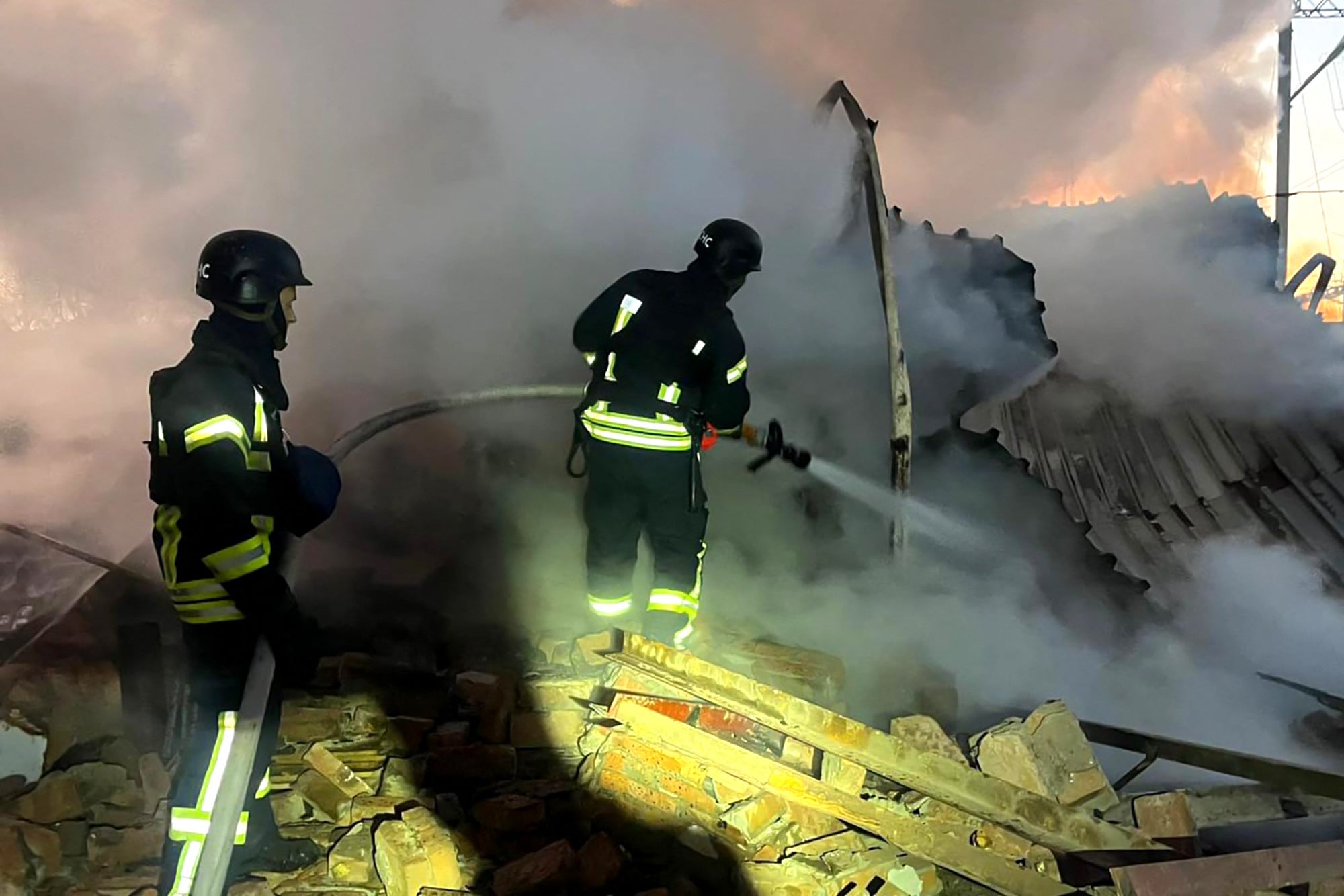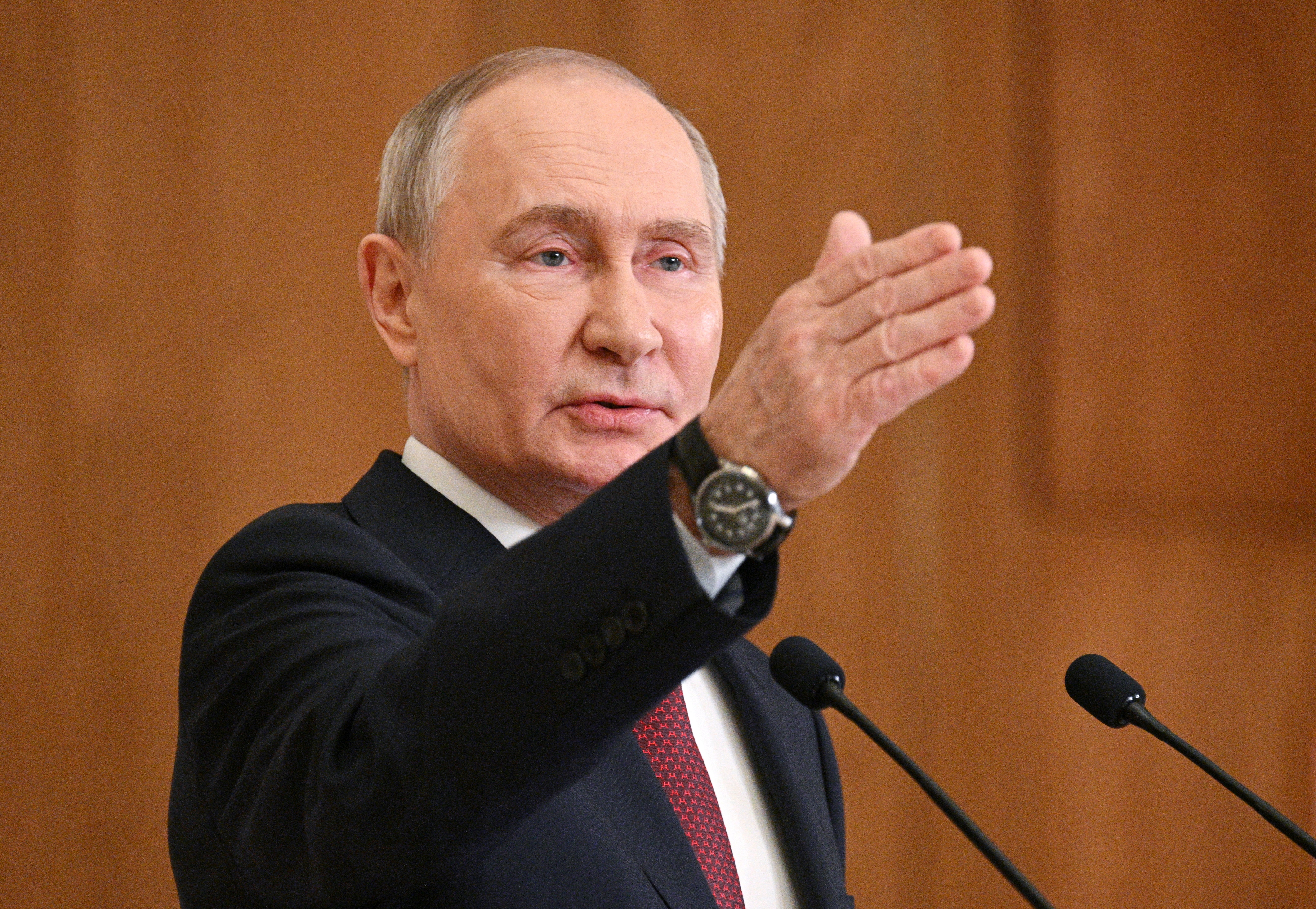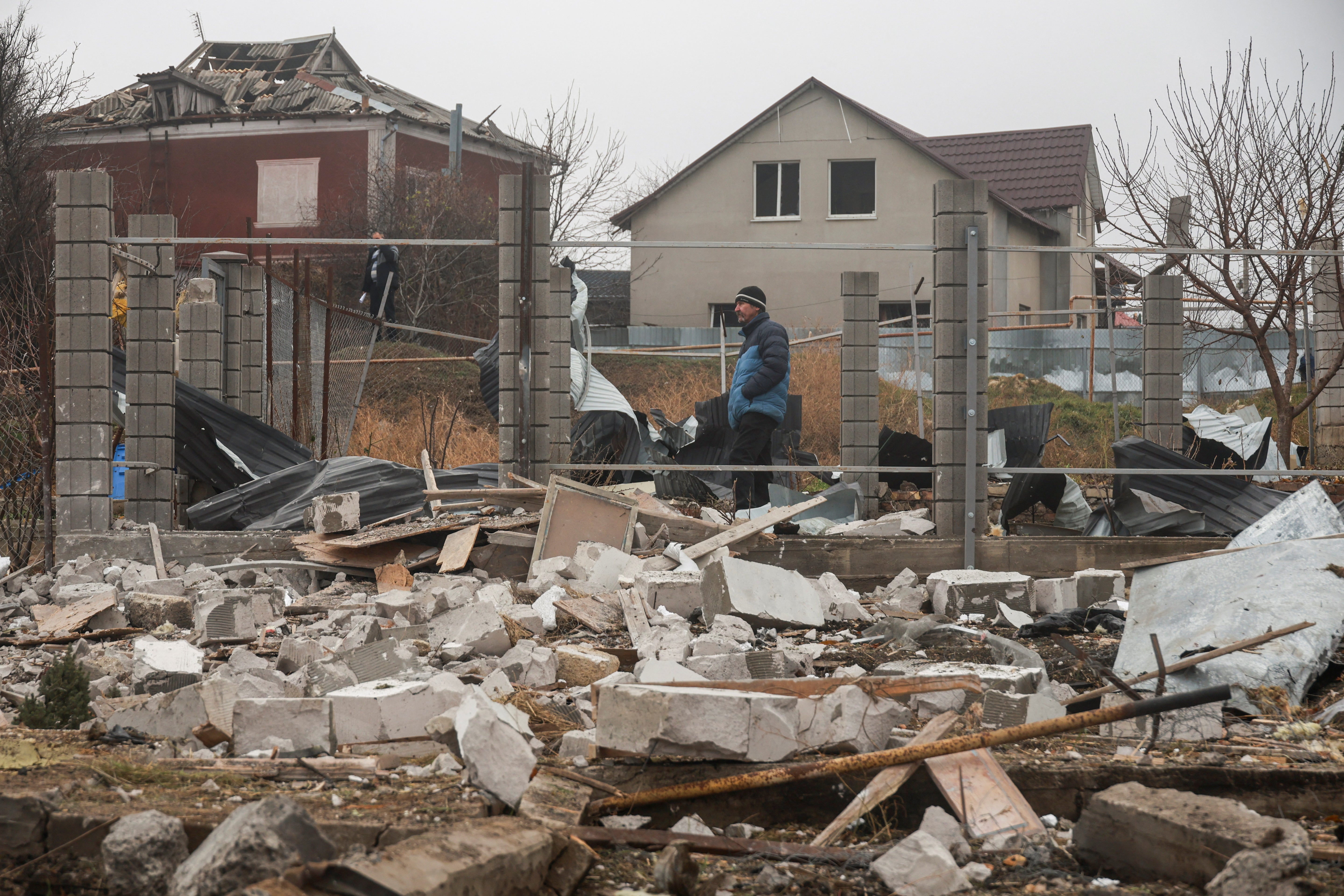Putin threatens to target Kyiv ‘decision-making centres’ with new missile
It comes as Russia’s second big aerial attack on Ukraine’s energy system this month leaves one million people without power

Your support helps us to tell the story
From reproductive rights to climate change to Big Tech, The Independent is on the ground when the story is developing. Whether it's investigating the financials of Elon Musk's pro-Trump PAC or producing our latest documentary, 'The A Word', which shines a light on the American women fighting for reproductive rights, we know how important it is to parse out the facts from the messaging.
At such a critical moment in US history, we need reporters on the ground. Your donation allows us to keep sending journalists to speak to both sides of the story.
The Independent is trusted by Americans across the entire political spectrum. And unlike many other quality news outlets, we choose not to lock Americans out of our reporting and analysis with paywalls. We believe quality journalism should be available to everyone, paid for by those who can afford it.
Your support makes all the difference.Vladimir Putin has threatened to strike Kyiv with Moscow’s new ballistic missile – in the wake of his forces conducting a “massive” aerial assault on energy infrastructure across Ukraine.
The Russian president claimed future targets could include "decision-making centres" in the Ukrainian capital, as he said the latest strikes by almost 200 drones and missiles were in response to Ukraine using long-range US- and UK-supplied missiles against Russia. Given that Moscow has repeatedly struck Ukraine’s energy sector during its almost three-year invasion – and that this was the second large attack in a month – Putin’s remarks have little credibility.
Ukrainian president Volodymyr Zelensky accused Russia of a "despicable escalation", saying it had used cruise missiles with cluster munitions in its early morning strikes.
More than one million people lost power in the immediate aftermath of the strikes, and millions more had their existing schedule of rolling power cuts intensified.
Ukraine's air force said Russia used 91 missiles and 97 drones in Thursday's attack. It said 12 of those had hit their targets, most of which were energy and fuel facilities.
"The enemy is using a large number of missiles and drones. Their massive use in certain areas often exceeds the number of means of (air defence) cover," the air force said in a statement.
Infrastructure facilities were damaged in nine regions, Ukraine's Interior Ministry said.

The attack reinforced fears of long power cuts during the winter months as temperatures hover around zero. It was the 11th massive combined attack by Russia on Ukraine's energy infrastructure this year, with around half of it having been destroyed over the course of the war.
Explosions in Thursday's Russian attack were reported in Kyiv, Kharkiv, Rivne, Khmelnytskyi, Lutsk, and many other cities in central and western Ukraine.
Ukraine’s air force said Russia was using thermal and radar decoys to trick Ukrainian air defences, and putting electronic warfare devices on its missiles.
"All this significantly complicates the operation of Soviet-made anti-aircraft missile systems. Western systems work much more effectively in such conditions, but Ukraine does not have enough to reliably cover hundreds of critical infrastructure facilities," the air force said.
It said foggy weather conditions also made it harder for machine gunners to spot drones.
British prime minister Sir Keir Starmer called Putin’s strikes against the energy sector “depraved”.

Russia says Ukraine fired US-supplied ATACMS missiles into western Russia for the first time on 19 November, prompting it to respond two days later by firing the experimental new Oreshnik intermediate-range missile on the city of Dnipro. British Storm Shadow missiles have also been used, after Washington dropped its objections to the missiles being fired into Russia after months of pleading by Kyiv.
Putin has escalated his threats against Ukraine and its Western allies recently, and in his latest address has made a number of wild claims, including that Moscow’s production of advanced missile systems exceeds that of the Nato military alliance by 10 times.
Speaking at the Collective Security Treaty Organisation (CSTO) in Kazakhstan, Putin said: “At present, the Ministry of Defence and the General Staff are selecting targets to hit on Ukrainian territory.
“These could be military facilities, defence and industrial enterprises, or decision-making centres in Kyiv.”
The Russian president boasted that the new Oreshnik was comparable to a nuclear weapon in terms of its destructive power – but he said it would not carry a nuclear warhead. The missile used last week to strike Dnipro is believed to have carried dummy warheads and caused limited damage.
"Putin does not want peace. We must force him into peace through strength," Ukraine’s foreign minister Andrii Sybiha said, reiterating Kyiv's call for more air defence and long-range capabilities from Western allies.
Join our commenting forum
Join thought-provoking conversations, follow other Independent readers and see their replies
Comments